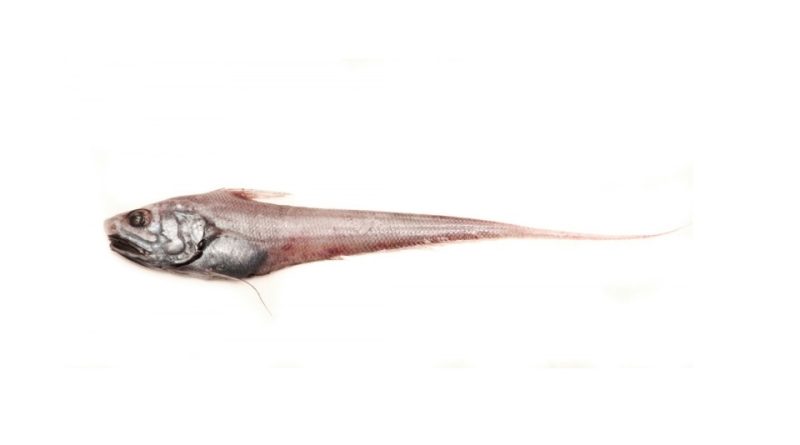Coryphaenoides mediterraneus
Coryphaenoides mediterraneus
The Mediterranean grenadier (Coryphaenoides mediterraneus Giglioli, 1893) is a deep-sea fish belonging to the Macrouridae family.
Systematics –
From a systematic point of view it belongs to:
Eukaryota domain,
Kingdom Animalia,
Subkingdom Eumetazoa,
Bilateria branch,
Phylum Chordata,
Subphylum Vertebrata,
Superclass Gnathostomata,
Class Actinopterygii,
Subclass Neopterygii,
Infraclass Teleostei,
Superorder Paracanthopterygii,
Order Gadiformes,
Family Macrouridae,
Genus Coryphaenoides,
C. mediterranean species.
The terms are synonyms:
– Chalinura mediterranea Giglioli, 1893;
– Chalinura murrayi europaea Nybelin, 1948;
– Coryphaenoides (Chalinura) mediterraneus Giglioli, 1893.
Geographic Distribution and Habitat –
The Coryphaenoides mediterraneus is an apparently very rare fish (because of the depths in which it lives) which is present in the western Mediterranean Sea including the Italian seas (reported in the north-western coast of Sardinia), in the Atlantic Ocean between Scotland (some reports from Iceland) and the Azores. It is also present in the western Atlantic in the waters of the Gulf of Mexico.
Its marine habitat is that of deep waters where it can be found up to over 4000 meters.
Description –
The Coryphaenoides mediterraneus can be recognized by the tapered, humped body, which ends posteriorly in an almost filiform way with maximum dimensions of 24 cm.
The color of the body, scales removed, is of a light red, with the head and the ventral area purplish black. The branchiostegal membranes are deep black while the fins are colourless.
It has a robust head, with a broad snout and trunk, on which three crests can be seen. Other less marked crests are the sub-ocular and sub-orbital ones. The eye is small.
It has a wide mouth with an opening that goes up to the vertical that passes through the posterior margin of the eye.
The mandible is slightly shorter than the maxilla and bears a thin barbel below the anterior symphysis. On the upper jaw we find an external series of robust teeth and an internal band of villiform teeth. In the mandible we also find only one set of large teeth. There are no teeth on the vomer and palatines.
It has two dorsal fins, with the first beginning above the insertion of the pectoral fins, its first ray formed by a very short spine and the second by a robust, serrated spine extending into a filament; the second fin is formed by very low rays. The anal begins immediately behind the anal opening and decreases slowly towards the caudal region. The caudal is connected with the anal and the second dorsal, but it is distinguished because it is formed by longer rays. The pectoral fins have an elongated upper radius. The ventral ones have a very elongated, robust and filamentous external ray.
Biology –
Coryphaenoides mediterraneus is a fish whose biology is almost unknown due to the depths where it lives.
Ecological role –
The Coryphaenoides mediterraneus is a carnivorous and abyssal fish that frequents depths around 2000 meters but which can go to greater depths.
This fish feeds on small benthic invertebrates. It has a daily activity cycle, as the solar cycle influences the movement of pelagic prey that move vertically during the day. It is also parasitized by many species of tapeworms.
It is trawled by oceanographic research vessels.
Guido Bissanti
Sources
– Wikipedia, the free encyclopedia.
– GBIF, the Global Biodiversity Information Facility.
– Louisy P., 2016. Guide to the identification of marine fish of Europe and the Mediterranean. Il Castello Editore, Milan.
– Nikiforos G., 2008. Fauna of the Mediterranean. Giunti Editore, Florence.
Photo source:
– https://www.descna.com/da/speciesrecords/fish/osteichthyes-bony-fish/gadiformes/coryphaenoides-mediterraneus-mediterranean-grenadier?i=Coryphaenoides-mediterraneus–2-
– https://www.colapisci.it/PescItalia/pisces/gadiformes/macruridae/calinura.htm


